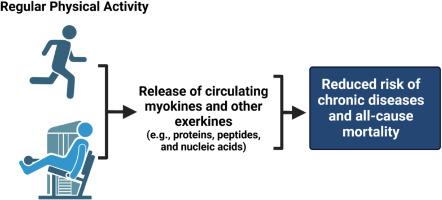Health benefits of physical activity: What role does skeletal muscle-organ crosstalk play?
IF 2.3
Q2 SPORT SCIENCES
引用次数: 0
Abstract
The observation that physical activity (PA) reduces the risk of coronary heart disease dates back more than 70 years ago and it is now established that regular PA reduces all-cause mortality, in part, by reducing the risk of numerous chronic diseases including coronary heart disease, stroke, cancer, type 2 diabetes, and Alzheimer's disease. During the past decade the increased use of activity tracking devices has significantly improved our understanding of the dose-response relationships between PA and all-cause mortality. Further, our appreciation of the impact that prolonged sitting has on all-cause mortality has increased. Moreover, new research provides key insight into the signaling mechanisms that connect PA to the reduced risk of disease in multiple organ systems. Therefore, given the recent advances in the study of PA and all-cause mortality, it is an appropriate time to review the latest evidence on this topic as well as the mechanisms responsible for the PA-induced protection against all-cause mortality. Therefore, this review will summarize recent data on the dose-response association between PA on all-cause mortality and the negative impact that sedentary behavior has on all-cause mortality. Further, we also highlight potential mechanisms linking PA with the reduced risk of developing several chronic diseases. Finally, we conclude with a brief discussion of the emerging evidence that the health benefits associated with PA are derived, in part, from skeletal muscle-organ crosstalk involving muscle produced hormones (myokines) that exert their effects in either an autocrine, paracrine, or endocrine manner.

体育活动对健康的益处:骨骼肌器官相声扮演什么角色?
体育活动(PA)降低冠心病风险的观察可以追溯到70多年前,现在已经确定,定期体育活动可以降低全因死亡率,部分原因是通过降低许多慢性疾病的风险,包括冠心病、中风、癌症、2型糖尿病和阿尔茨海默病。在过去的十年中,活动追踪设备的使用增加,大大提高了我们对PA和全因死亡率之间的剂量反应关系的理解。此外,我们越来越认识到久坐对全因死亡率的影响。此外,新的研究提供了将PA与多器官系统疾病风险降低联系起来的信号机制的关键见解。因此,鉴于PA和全因死亡率研究的最新进展,现在是回顾这一主题的最新证据以及PA诱导的预防全因死亡率的机制的合适时机。因此,本综述将总结最近关于PA对全因死亡率的剂量-反应关系以及久坐行为对全因死亡率的负面影响的数据。此外,我们还强调了PA与降低几种慢性疾病风险之间的潜在机制。最后,我们简要讨论了与PA相关的健康益处部分来自骨骼肌器官的相互作用,其中涉及肌肉产生的激素(肌因子),这些激素以自分泌、旁分泌或内分泌的方式发挥作用。
本文章由计算机程序翻译,如有差异,请以英文原文为准。
求助全文
约1分钟内获得全文
求助全文
来源期刊

Sports Medicine and Health Science
Health Professions-Physical Therapy, Sports Therapy and Rehabilitation
CiteScore
5.50
自引率
0.00%
发文量
36
审稿时长
55 days
 求助内容:
求助内容: 应助结果提醒方式:
应助结果提醒方式:


